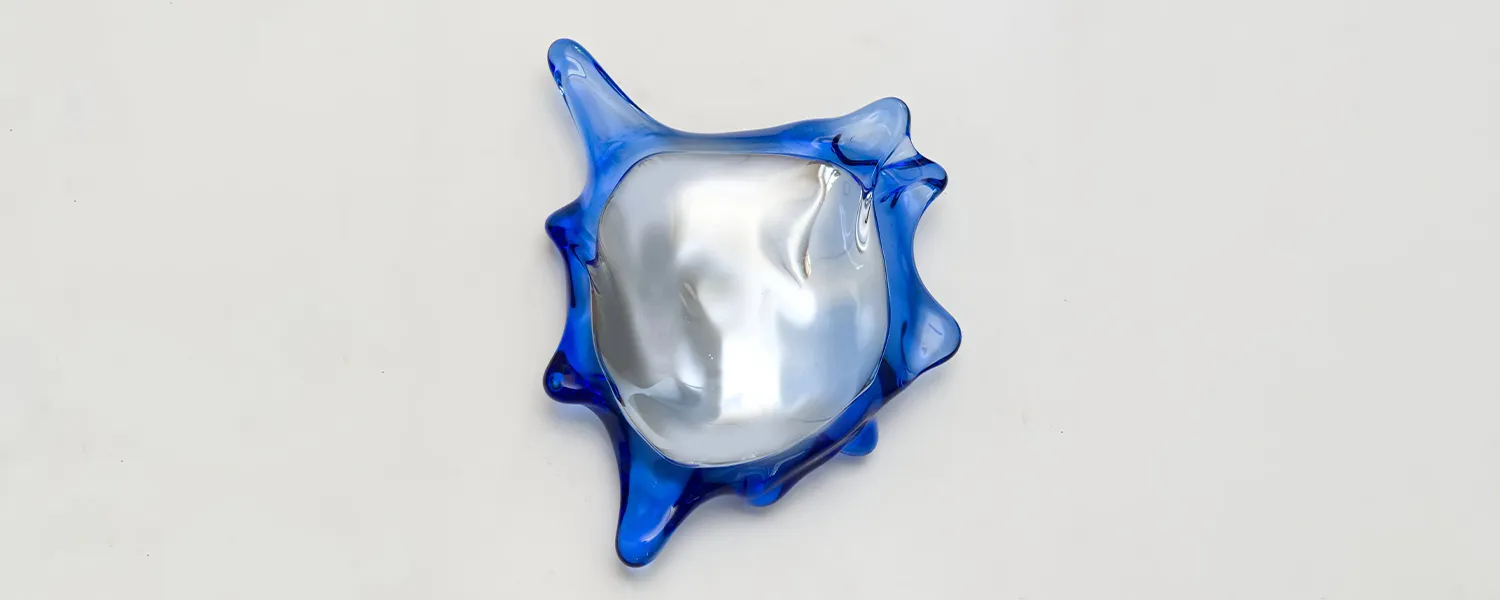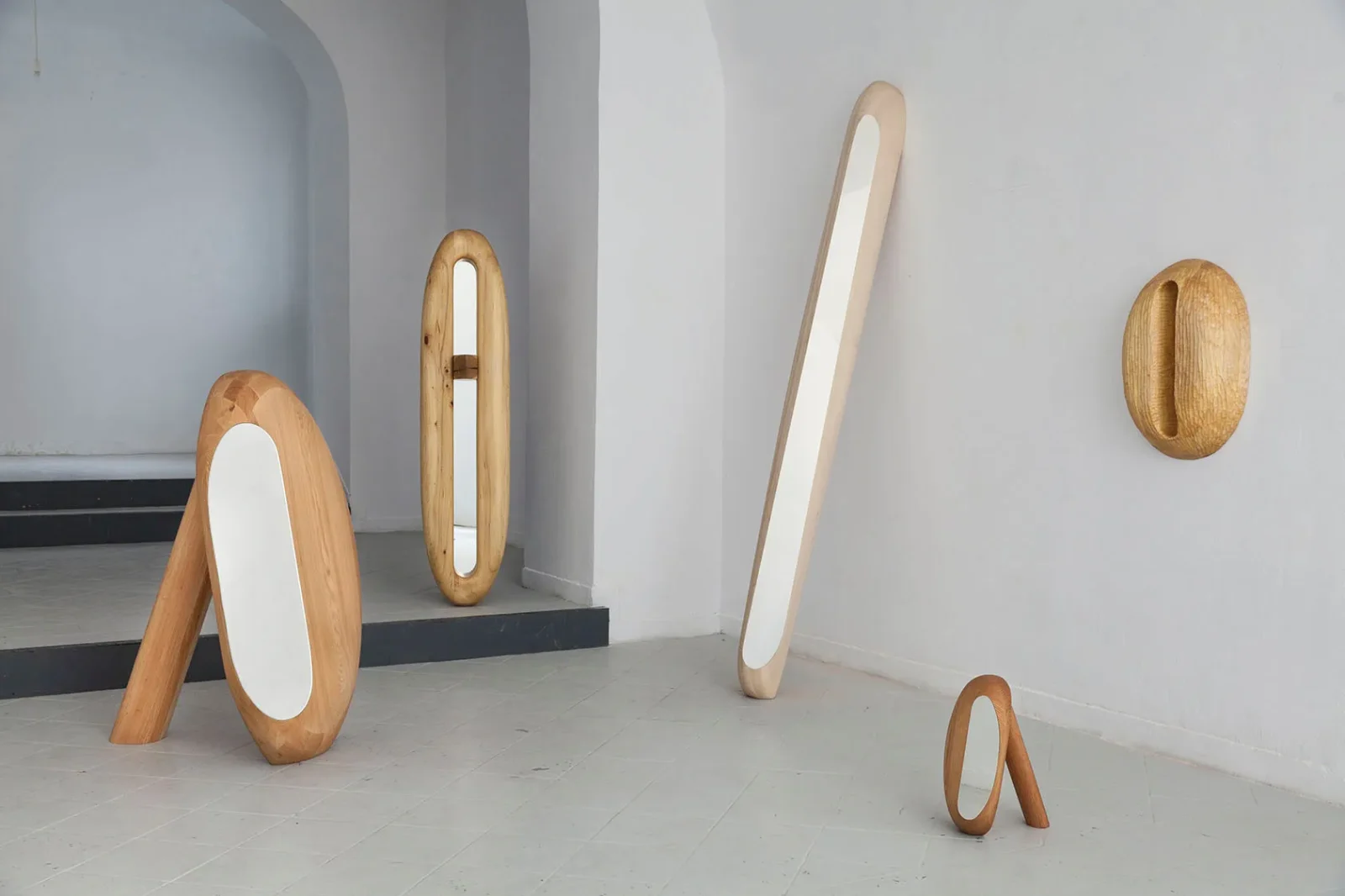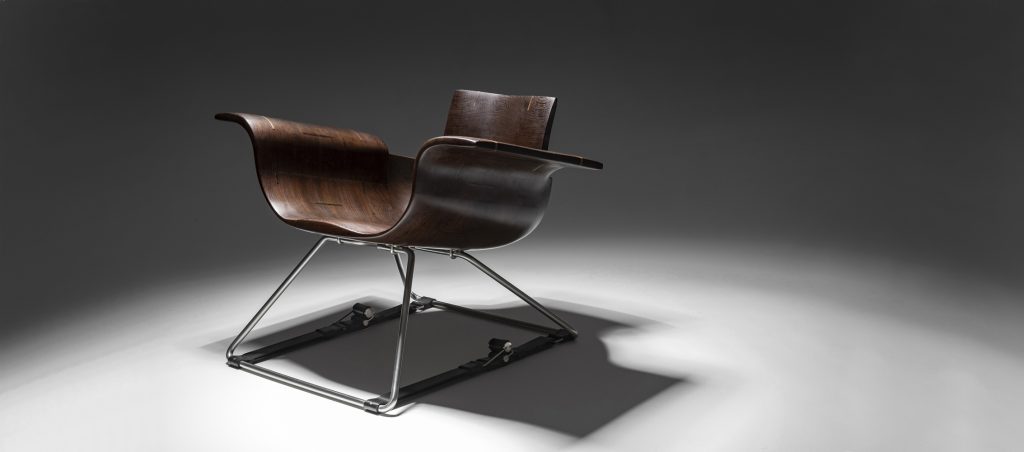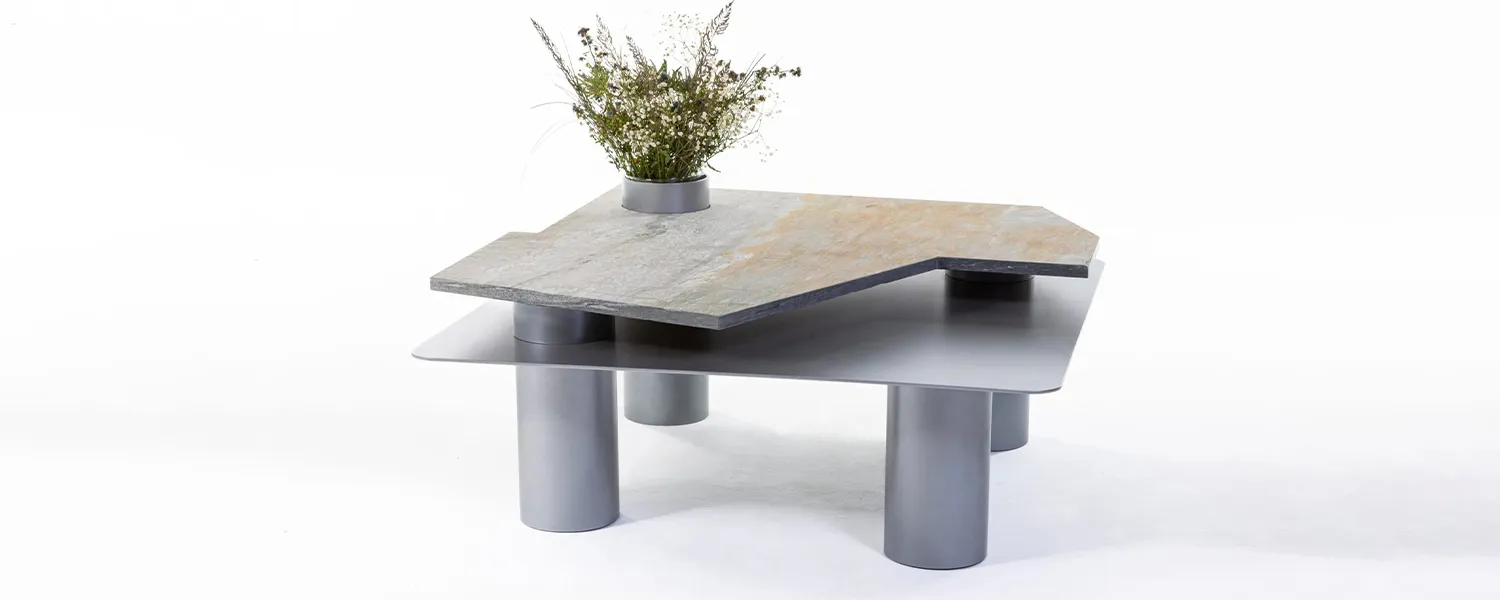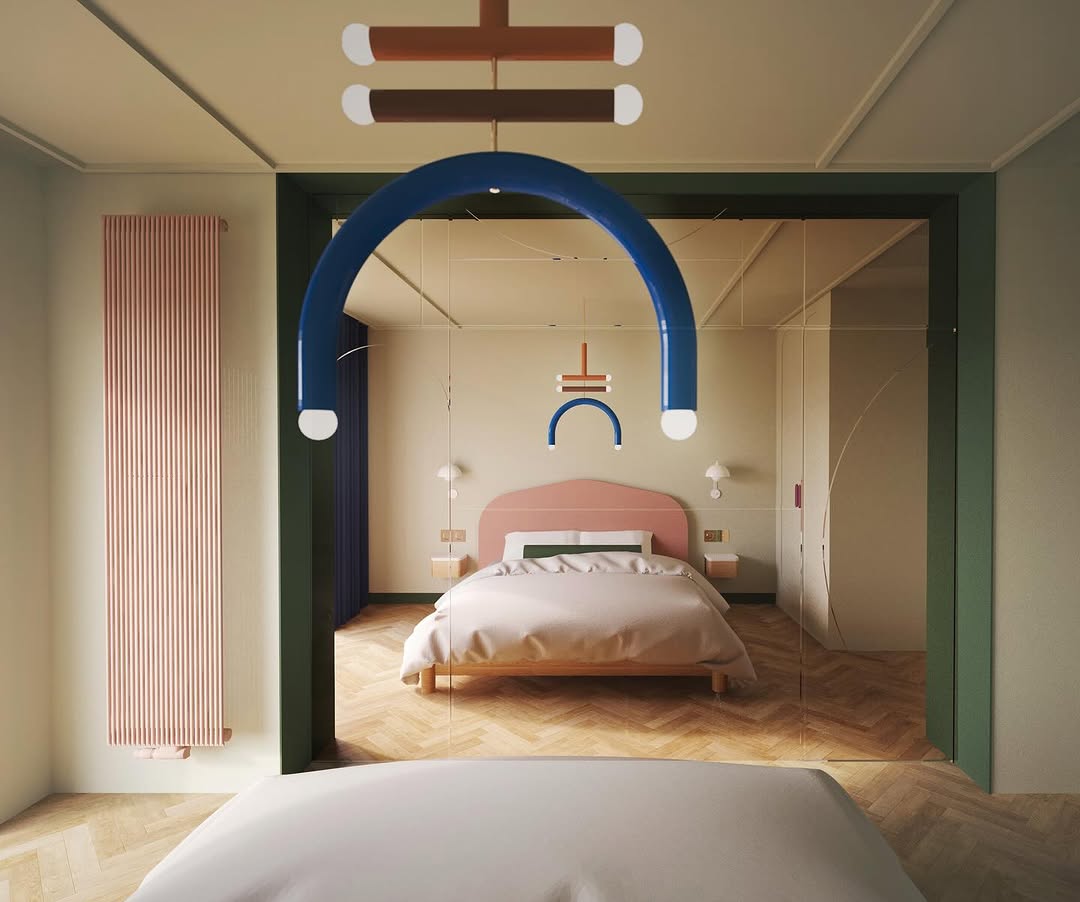
Bedroom Design Guide: 8 Expert Tips for Creating a Stylish and Functional Space
Your bedroom serves as the daily reset button for your mental and physical wellbeing. As your most intimate space, it deserves design attention that goes beyond fleeting trends. Focus on creating an environment that both shelters and celebrates your personal style. With strategic investments and thoughtful curation, your bedroom design can achieve both visual appeal and functional restoration—a space that looks beautiful while actively supporting your comfort and rest.
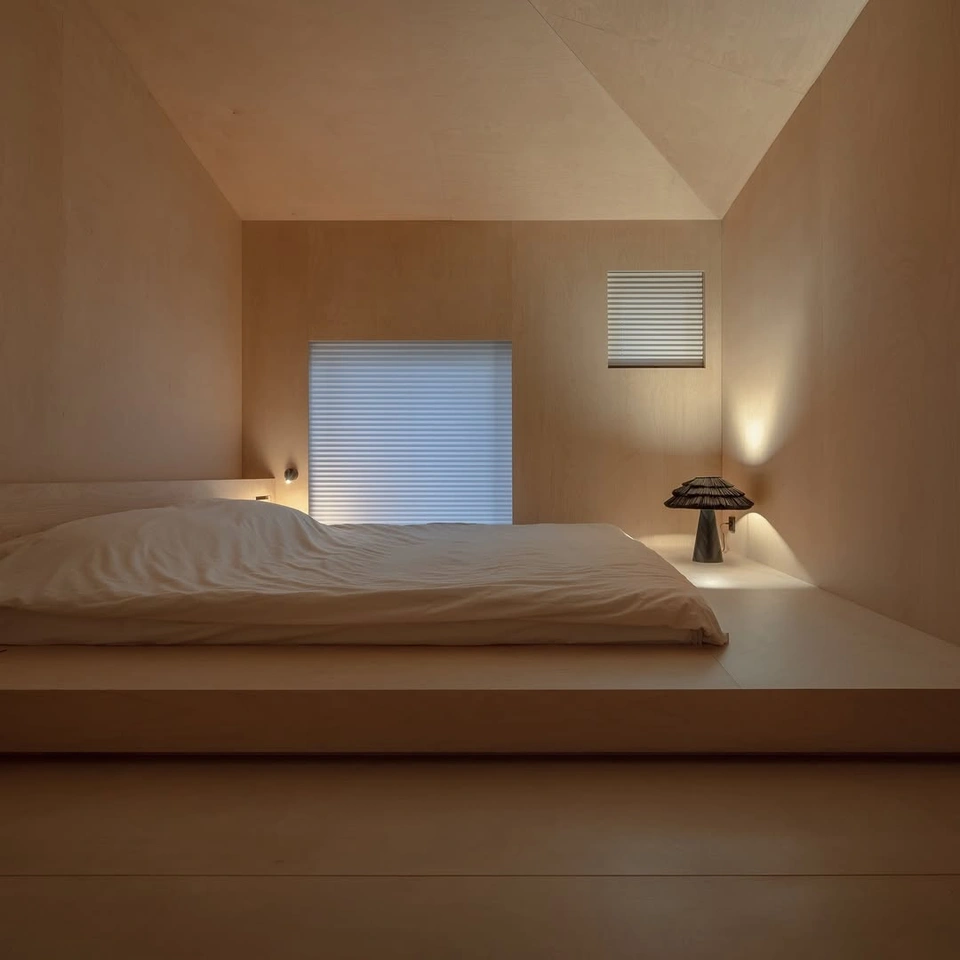

1. Choose a Quality Bed Frame as Your Focal Point
The bed is the gravitational center of your bedroom’s design universe. Everything else orbits around this focal point, making it worth the investment in both quality and visual impact.
- Material intentionality: Solid wood brings warmth and permanence, while cane introduces textural rhythm; upholstered frames in linen or rich velvet create softness with substance
- Integration science: Your bed frame establishes the design vocabulary for other pieces—its lines, proportions, and materiality should inform subsequent furniture choices
- Completion strategy: A carefully composed bed isn’t an afterthought—thoughtfully layered bedding with varied textures and a proportional headboard create visual architecture even when unmade


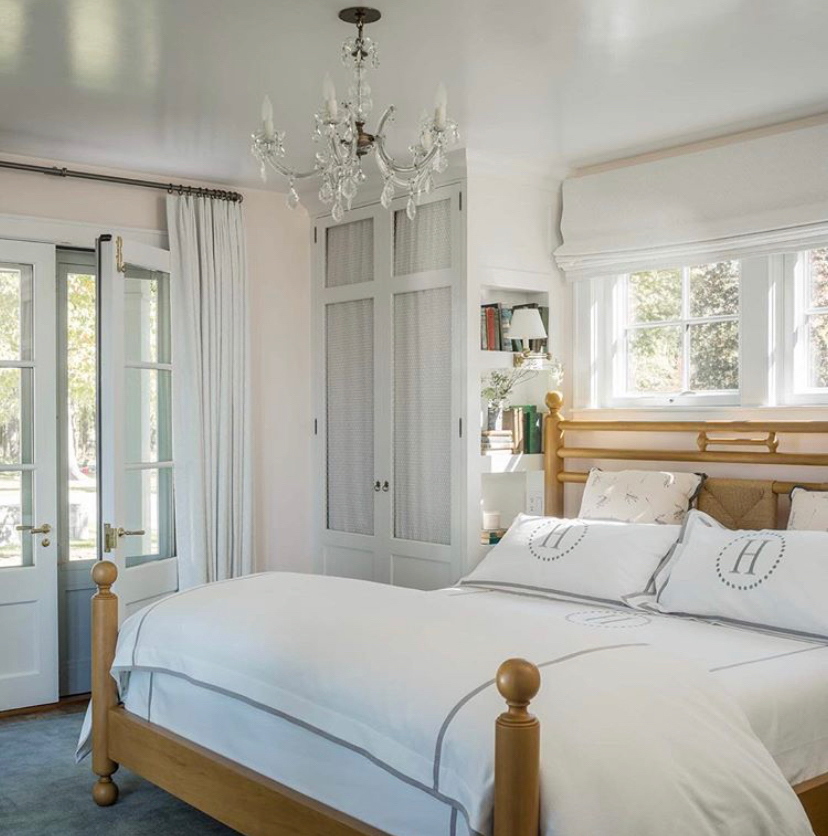

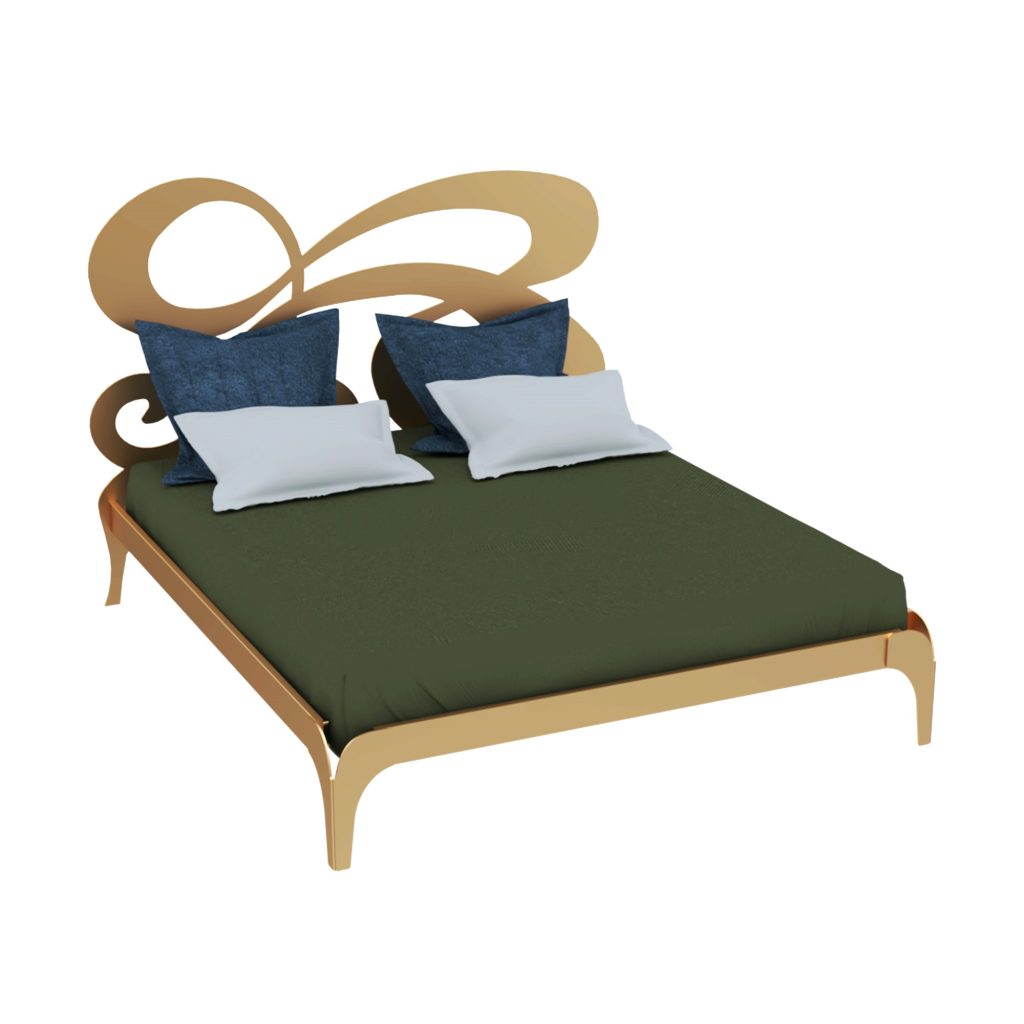

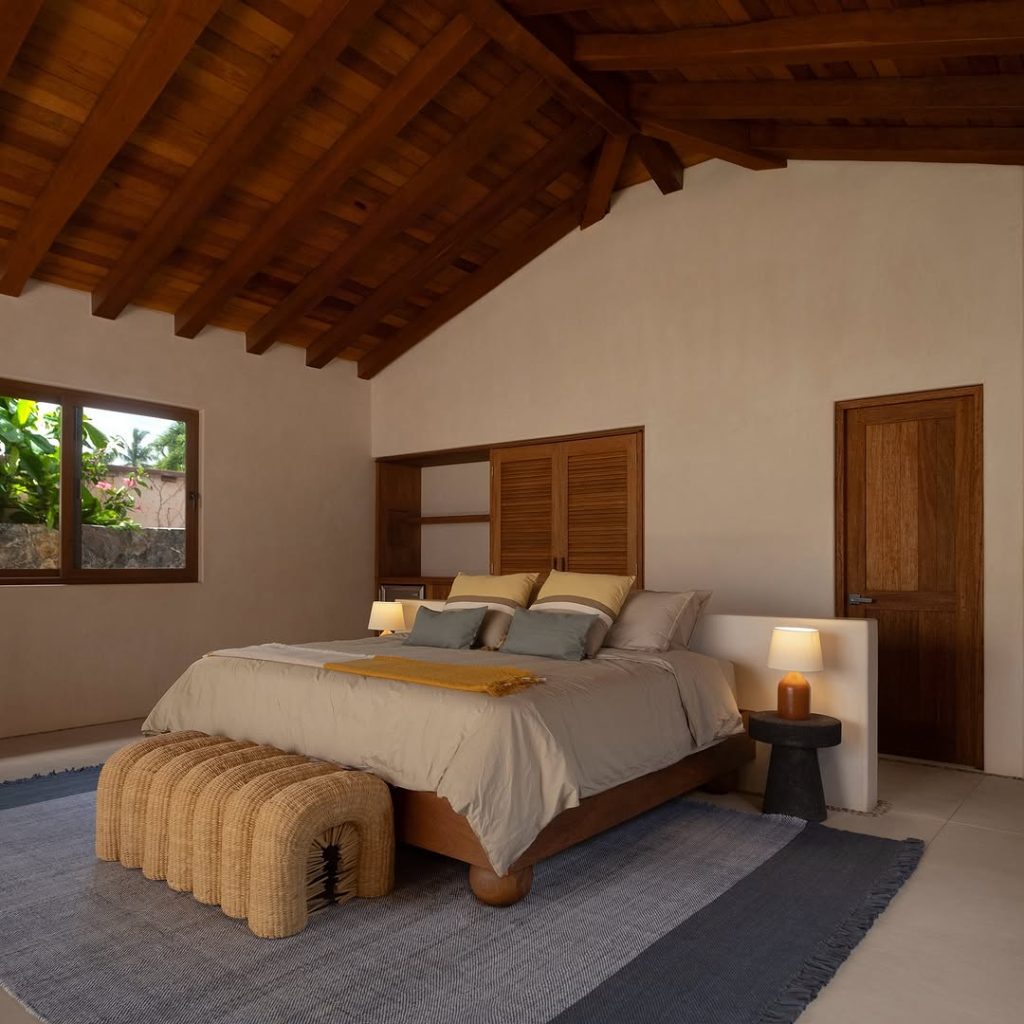

2. Select a Cohesive Color Palette
Color in bedrooms functions differently than in social spaces—it should work as a psychological tool first, aesthetic choice second. A sophisticated palette creates both visual and emotional coherence.
- Tonal depth: Rather than flat, single-note colors, explore layered neutrals that shift subtly with changing light—warm whites, stone grays, dimensional taupes
- Accent discipline: Introduce secondary colors with restraint—deep mineral tones like slate blue, forest green, or terracotta create richness without overwhelming
- Vertical opportunity: Wall treatments become powerful color vehicles—consider saturated paint, textural wallpaper, or applied molding to activate the room’s largest visual planes
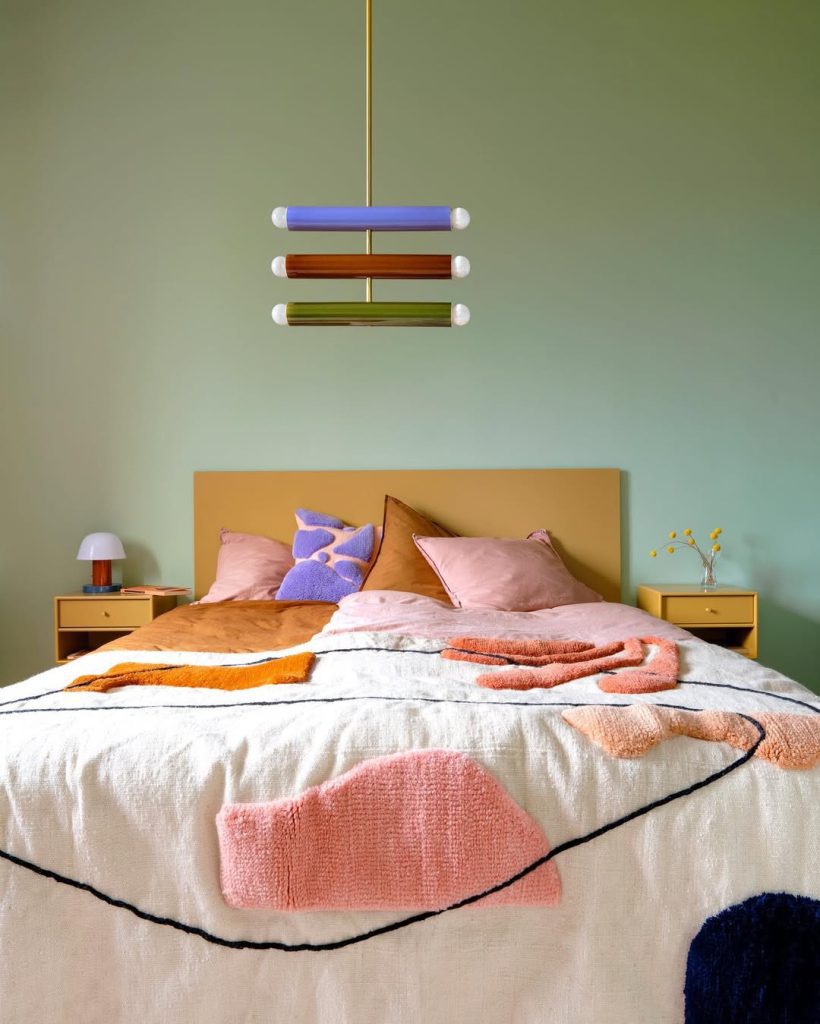

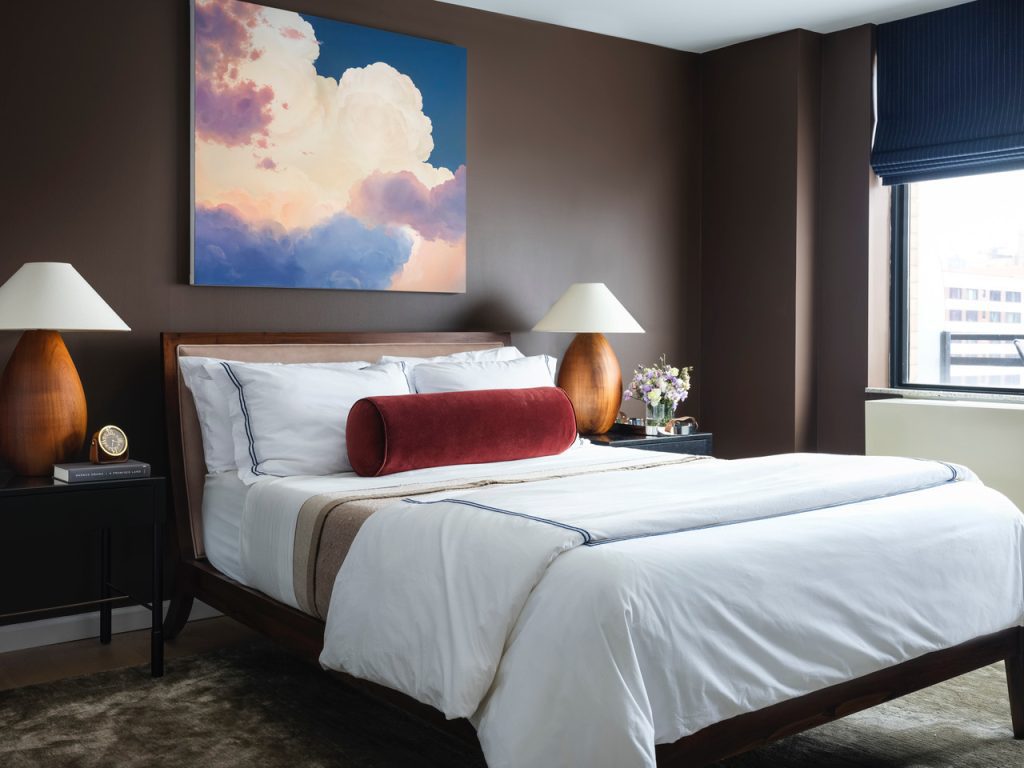

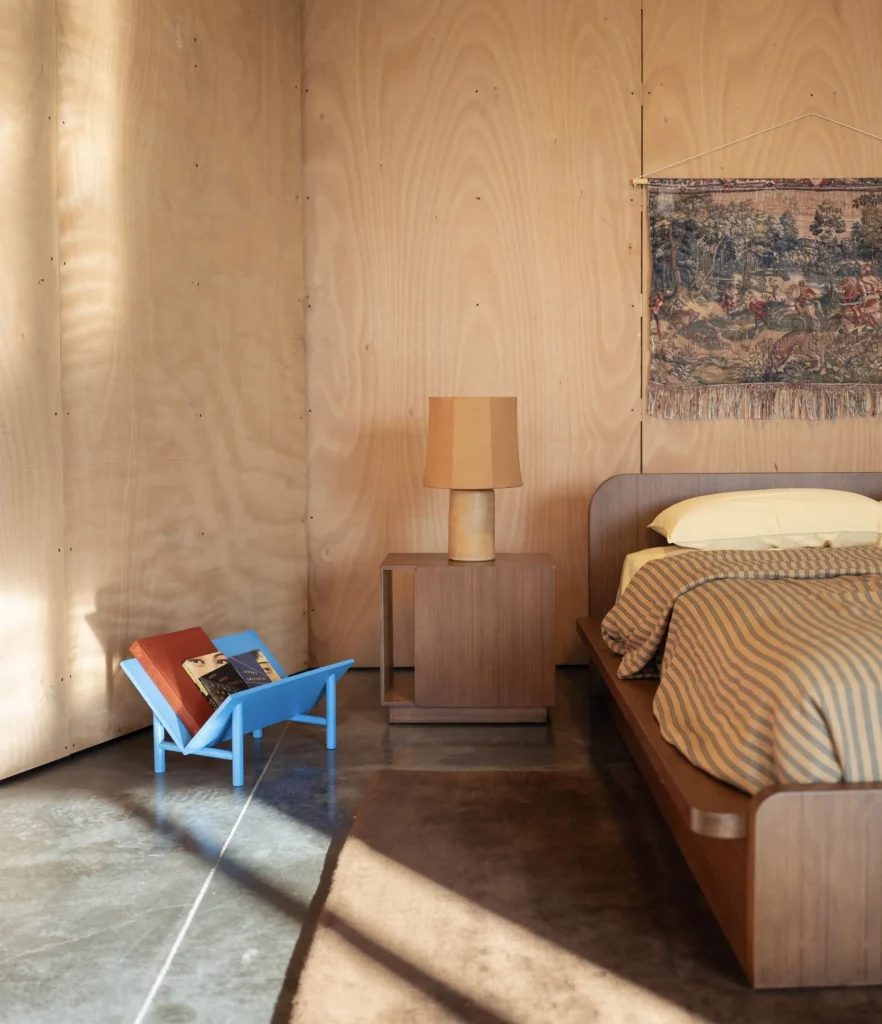

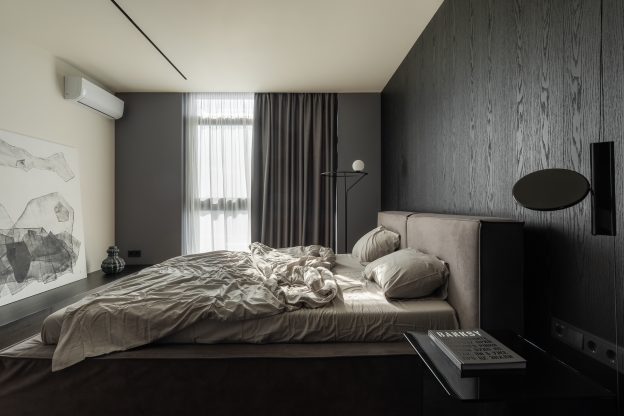

3. Invest in Quality Lighting Fixtures
Bedroom lighting serves dual masters—practical function and atmospheric effect. Each fixture should earn its place through both visual presence and quality of illumination.
- Dimensional layering: Create a lighting ecosystem rather than relying on a single source—combine overhead ambient fixtures with task-specific bedside lighting
- Material dialogue: Choose fixtures that communicate with other room elements—antiqued brass echoes warm woods, while alabaster or opaline glass diffuses light with subtle elegance
- Ambiance control: Light should reflect your circadian needs—dimmable options with warm temperature bulbs support the transition from activity to rest
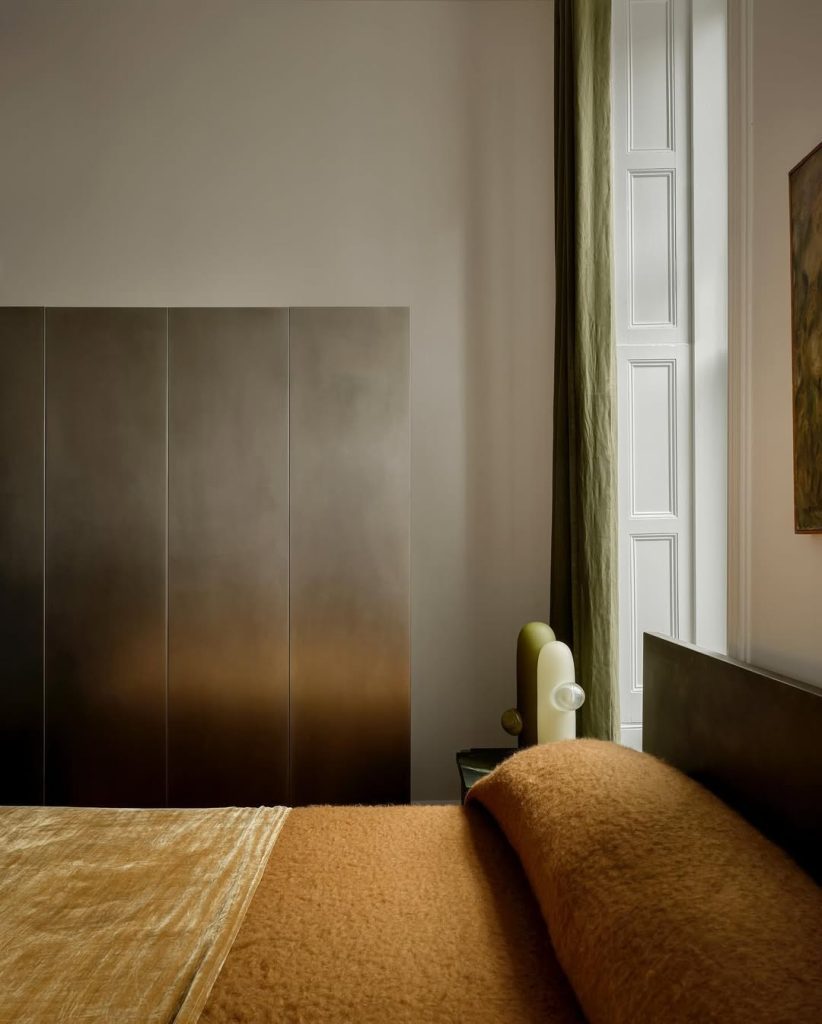

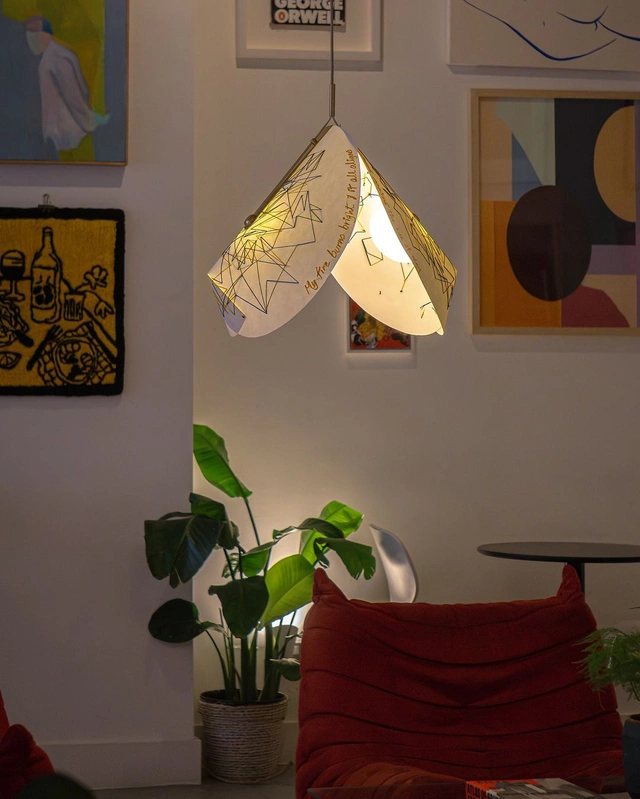

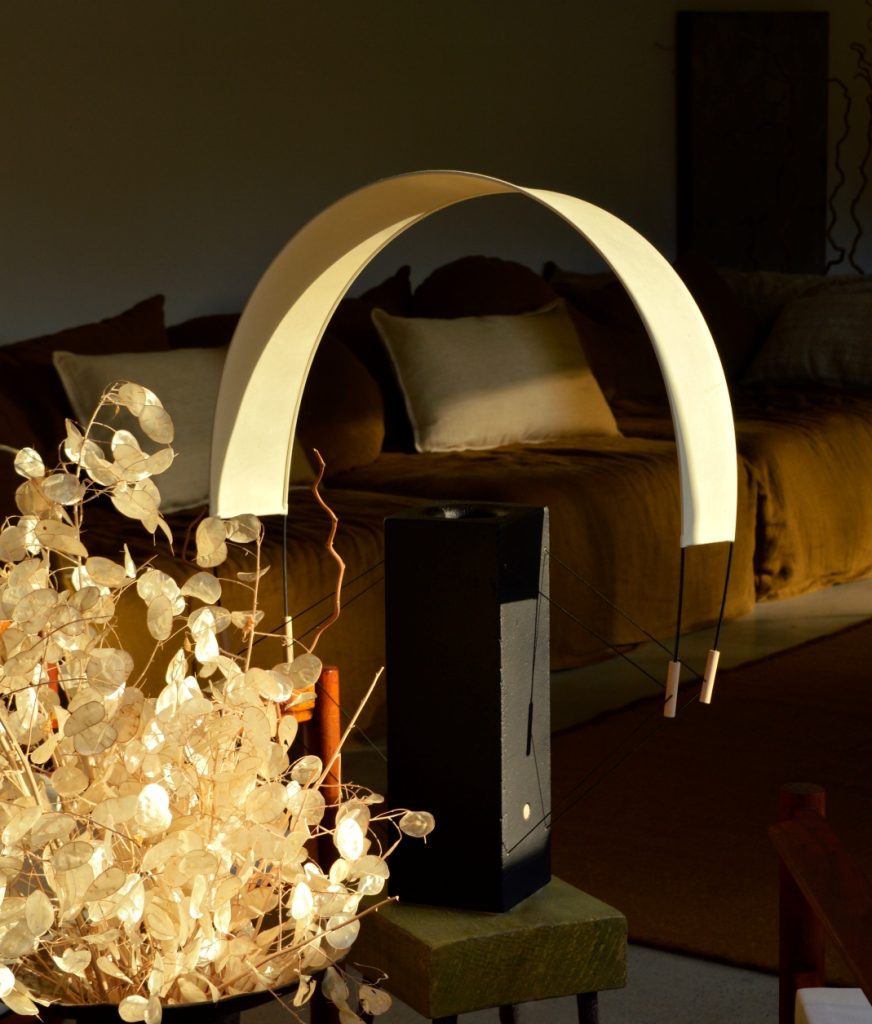

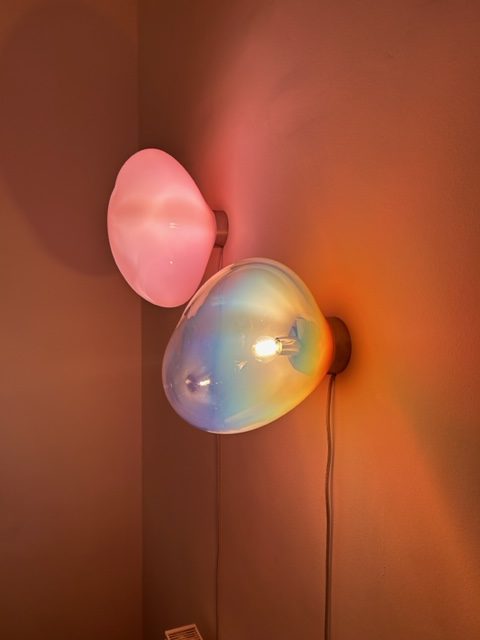

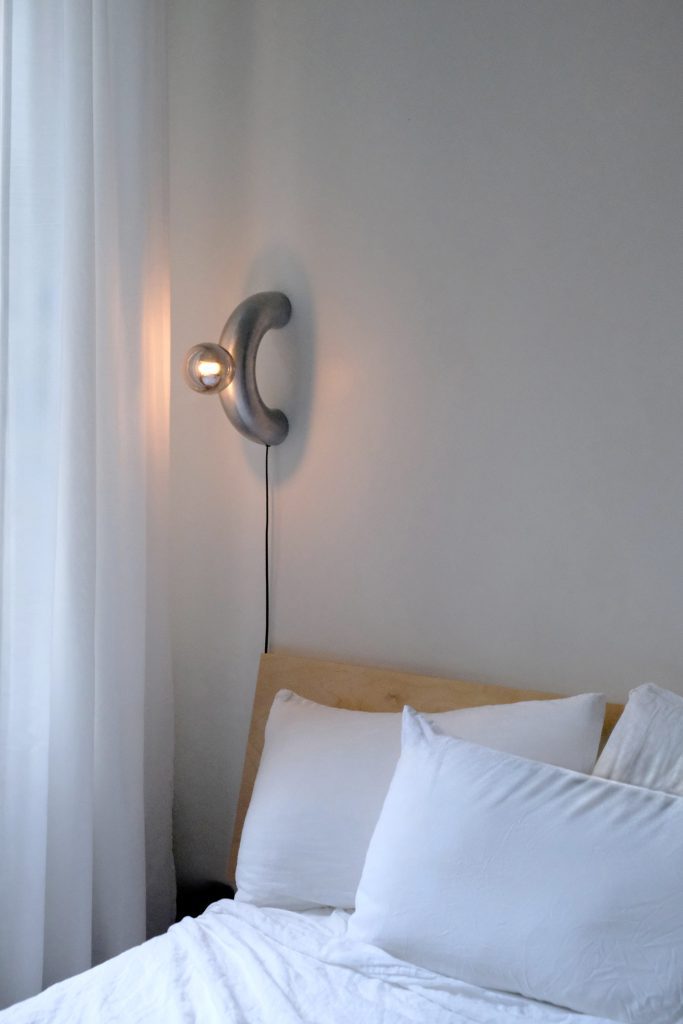

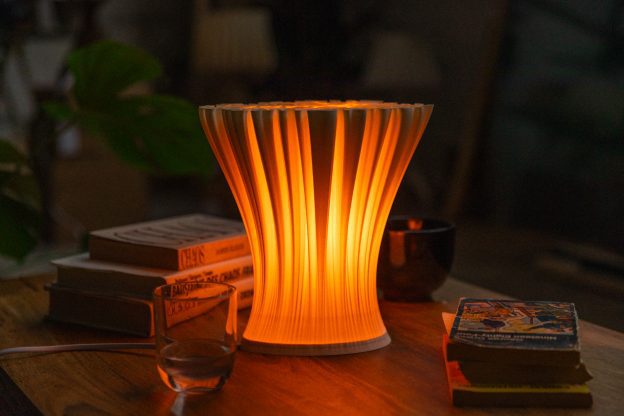

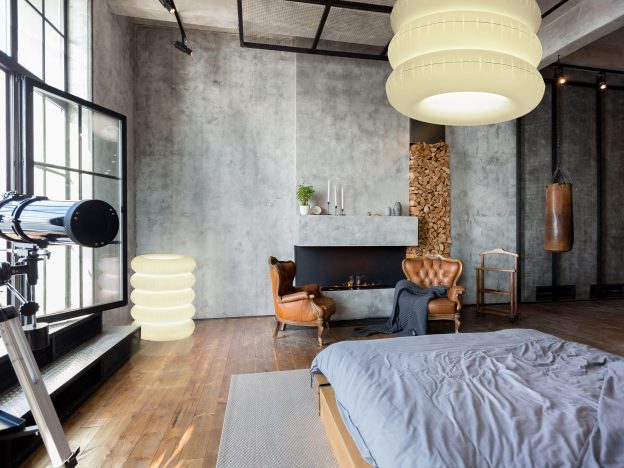

4. Add a Well-Proportioned Area Rug
A thoughtfully selected rug does more than soften footfalls—it creates visual boundaries, absorbs sound, and introduces an essential design layer that unifies disparate elements.
- Scale mathematics: Your rug should extend at least 24 inches beyond the bed’s sides and foot—undersized rugs create visual tension and physical discomfort
- Materiality considerations: Natural fibers introduce subtle texture—handwoven wool provides durability with character, while silk blends add luminosity that shifts with viewing angle
- Pattern strategy: Consider your rug’s pattern from a reclining perspective—intricate details lost from standing height become engaging visual elements when viewed from bed
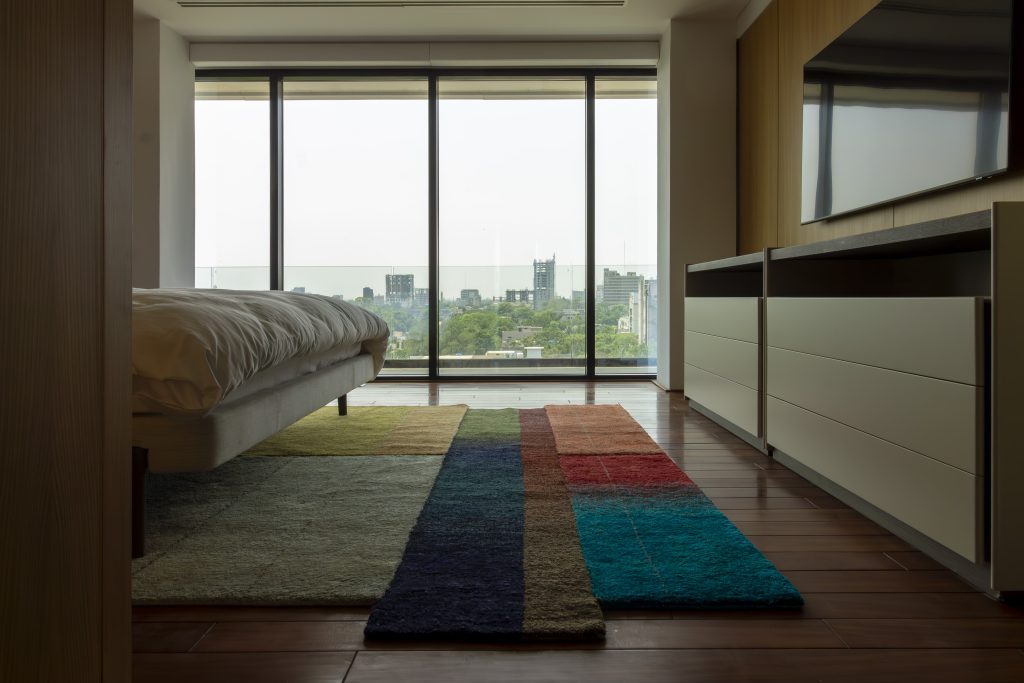

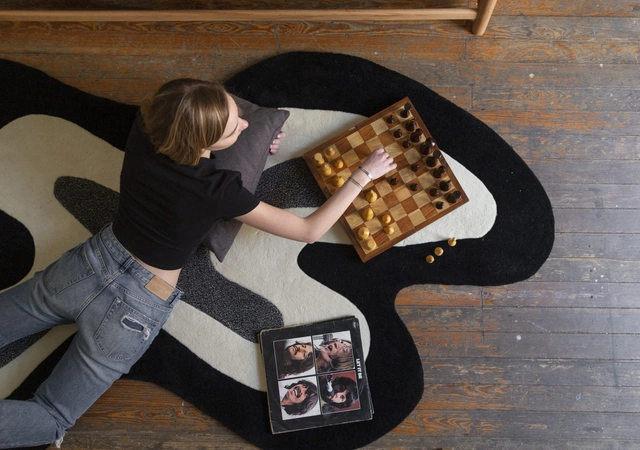

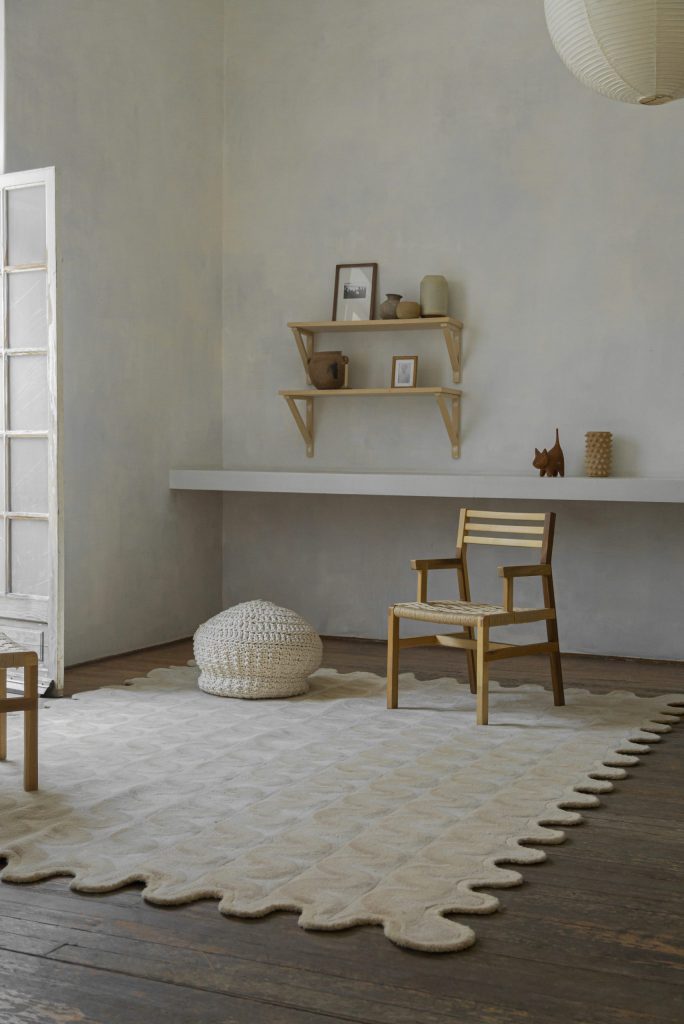

5. Select Functional and Stylish Nightstands
Nightstands and side tables play both a practical and aesthetic role in bedroom design. They provide essential storage and surface space while complementing your overall design scheme.
- Proportional harmony: Nightstands should maintain visual conversation with your bed frame—their height ideally falls within 2-4 inches of your mattress top
- Containment philosophy: Concealed storage preserves the calming effect of visual order—drawers or cabinets keep necessary items accessible without creating visual noise
- Surface curation: Treat the nightstand top as a deliberate composition—limit objects to those with both purpose and presence, creating negative space that feels intentional rather than empty
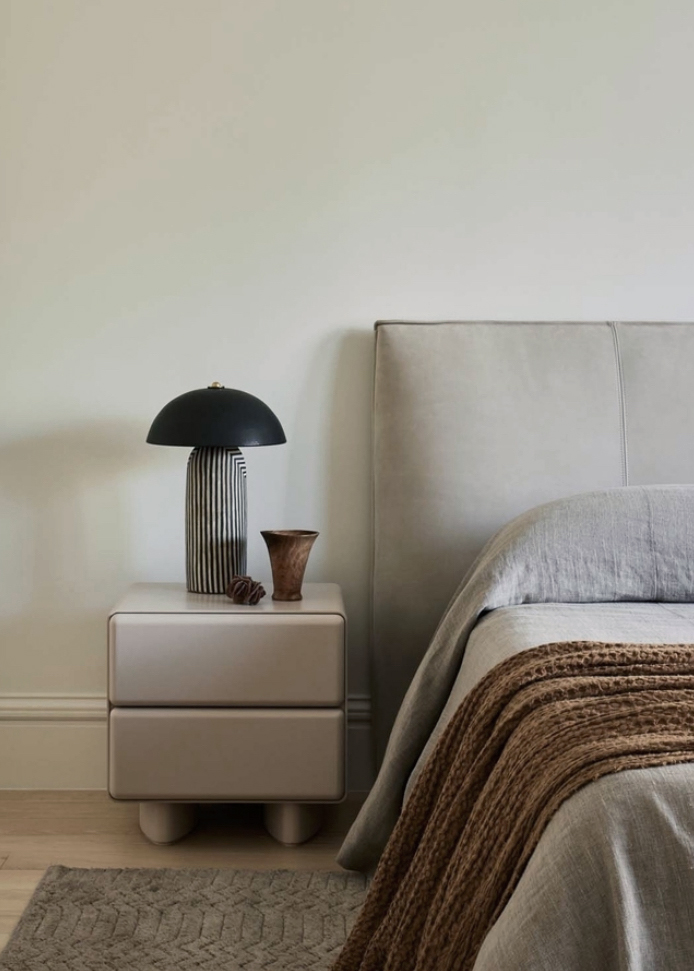

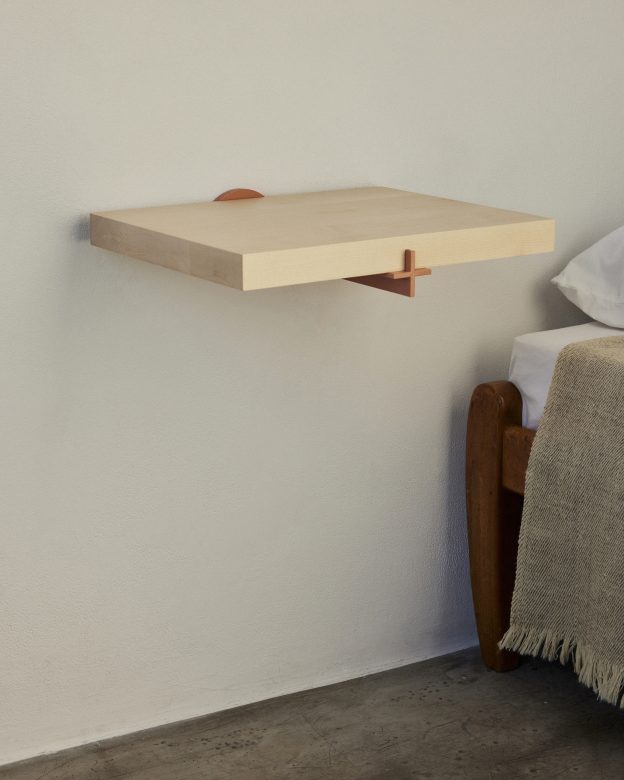

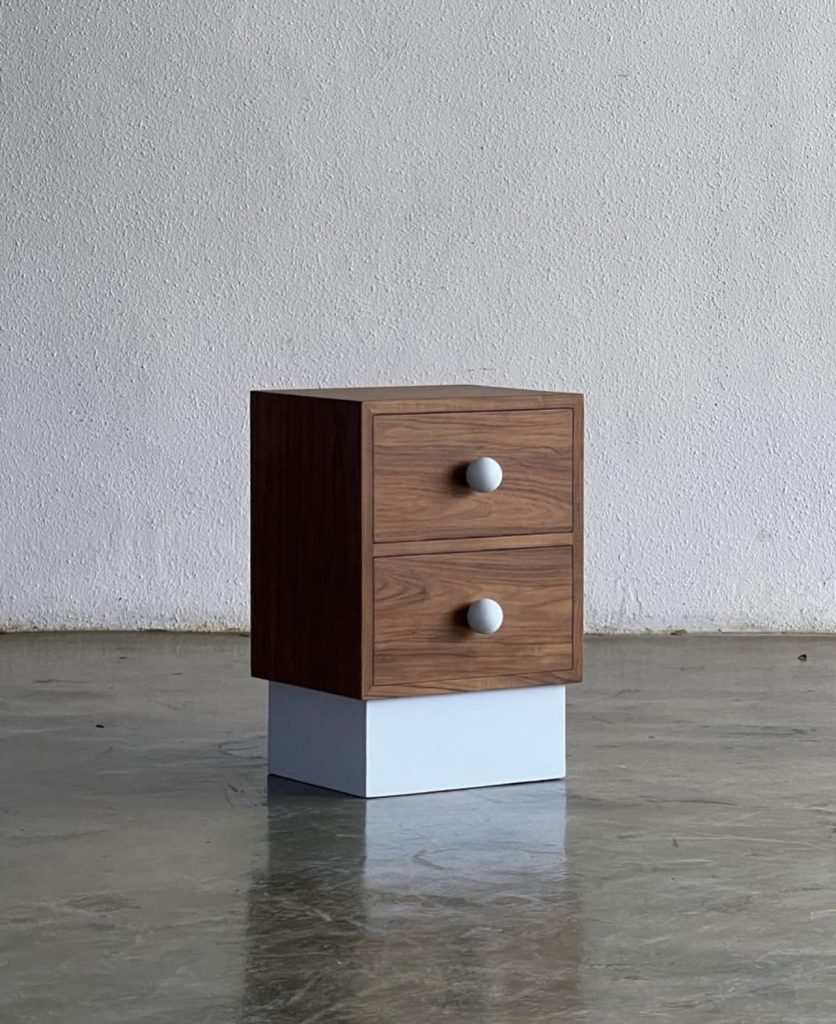

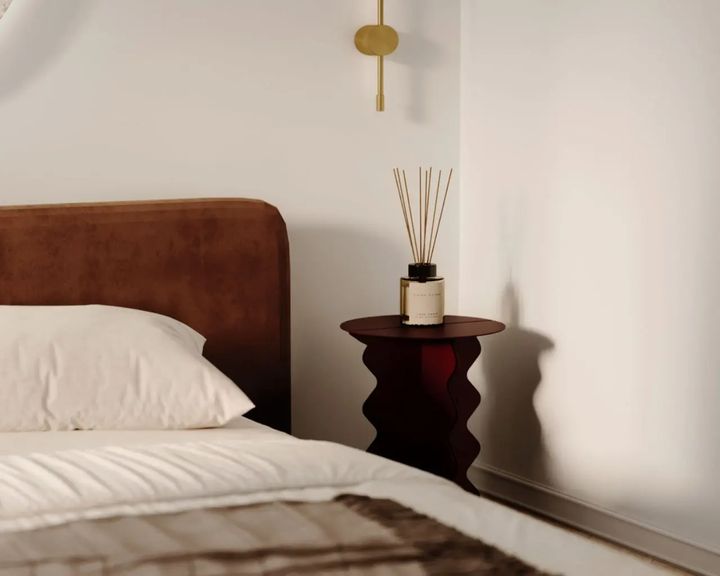

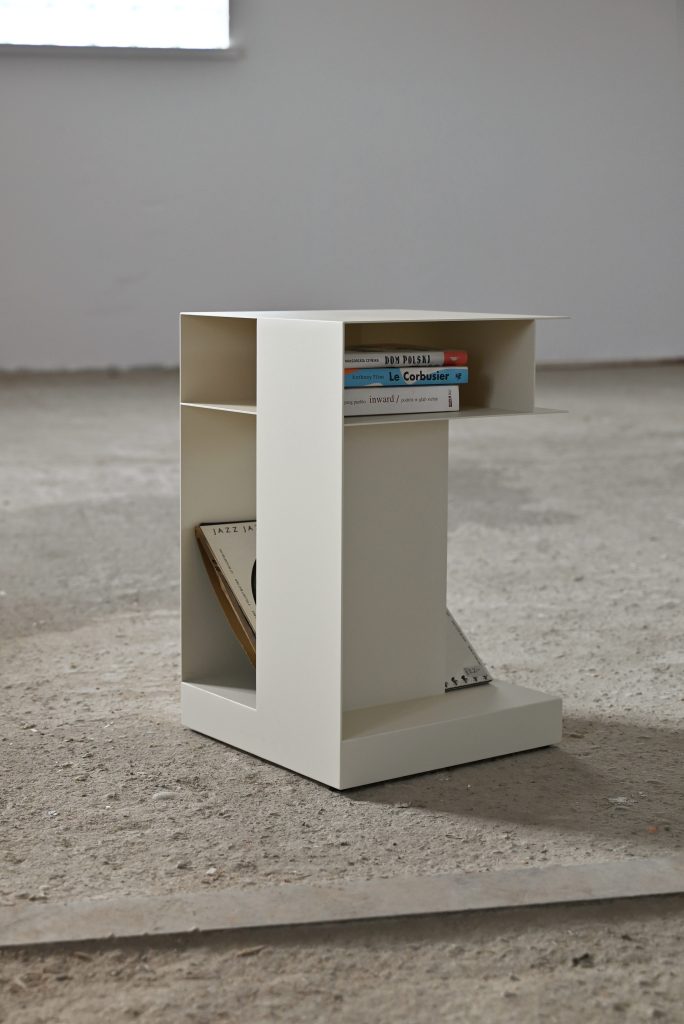

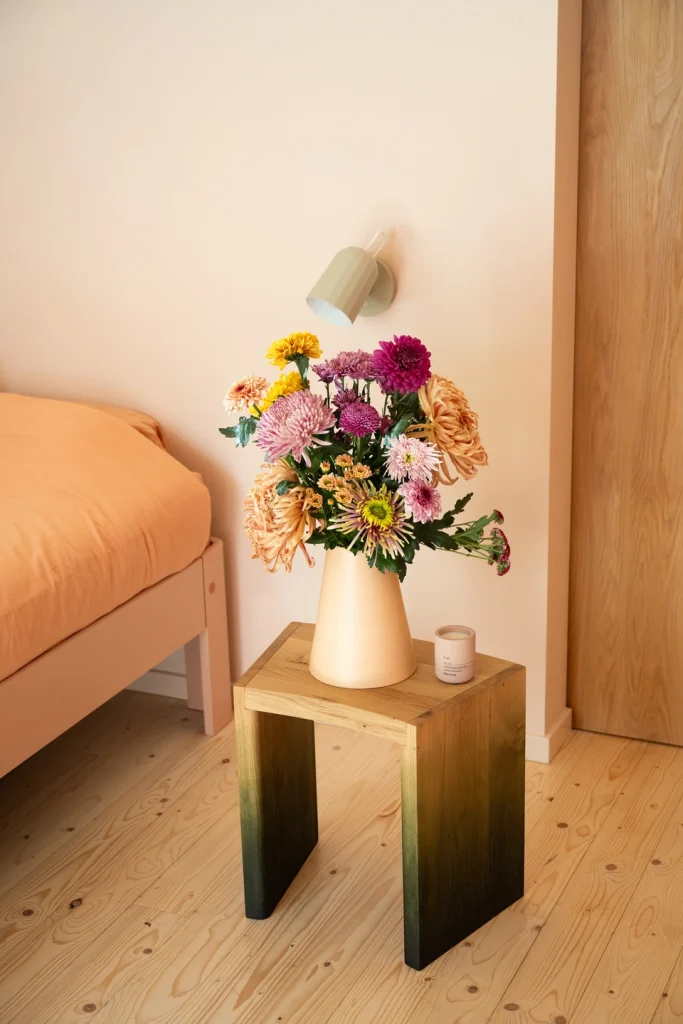

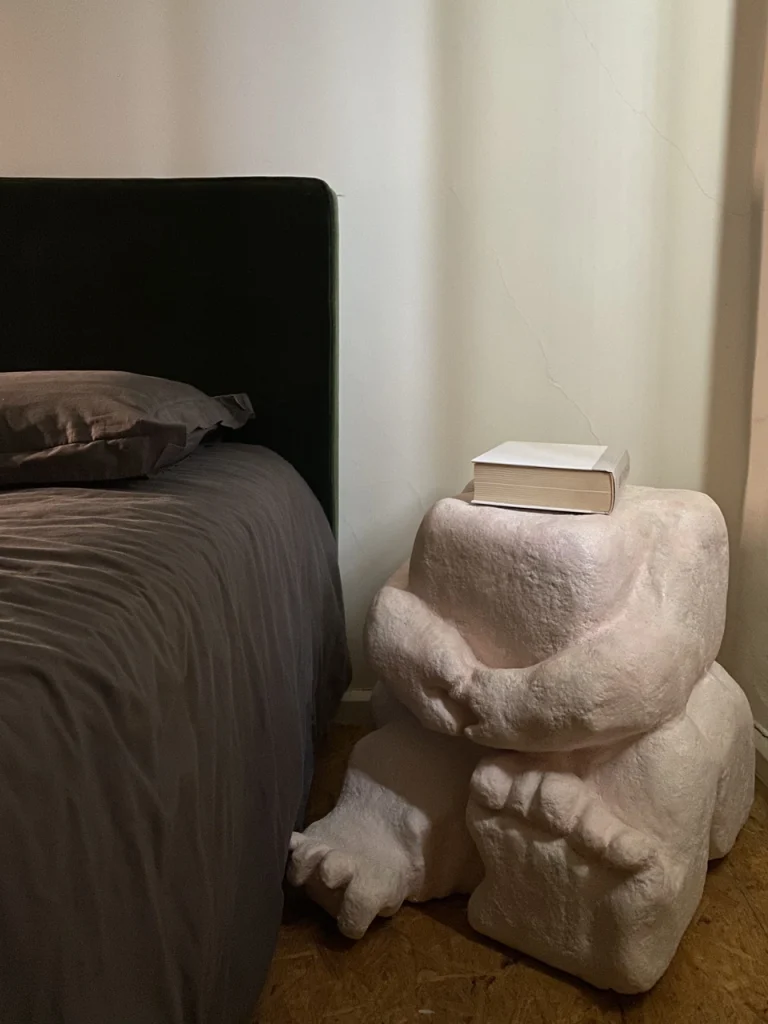

6. Incorporate Meaningful Decorative Elements
The difference between designed spaces and meaningful ones lies in personal curation. Thoughtfully selected objects transform your bedroom from a collection of furniture into a reflection of identity.
- Authenticity filter: Each decorative element should pass the significance test—would you replace this if lost, or would you barely notice its absence?
- Material diversity: Create textural conversation through varied materials—handmade ceramics against sleek metal, raw wood juxtaposed with polished stone
- Botanical integration: Living elements introduce subtle movement and life—consider architectural plants that require minimal maintenance while maximizing visual impact
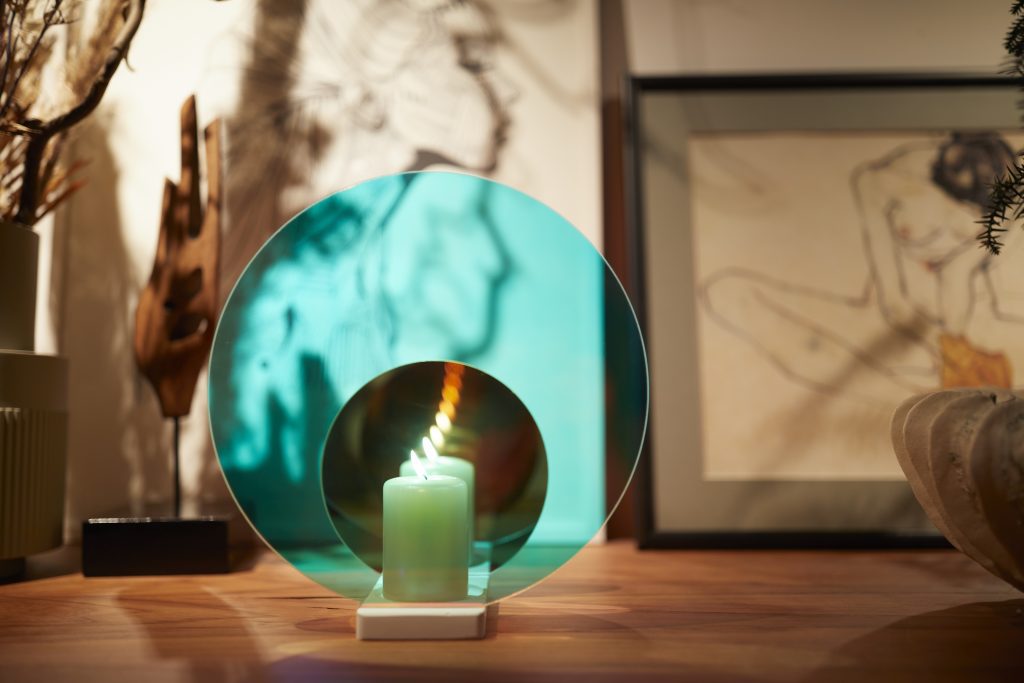

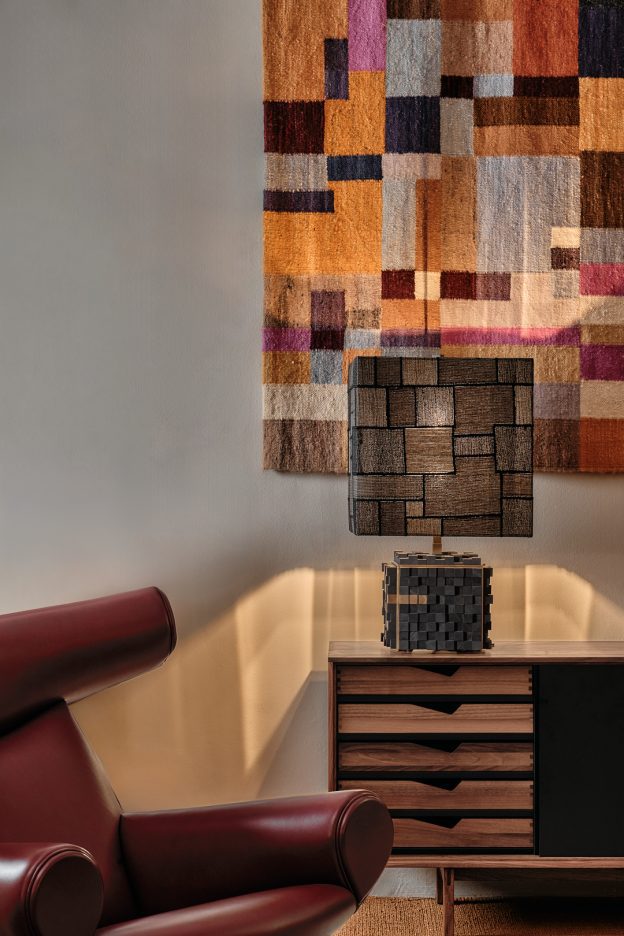

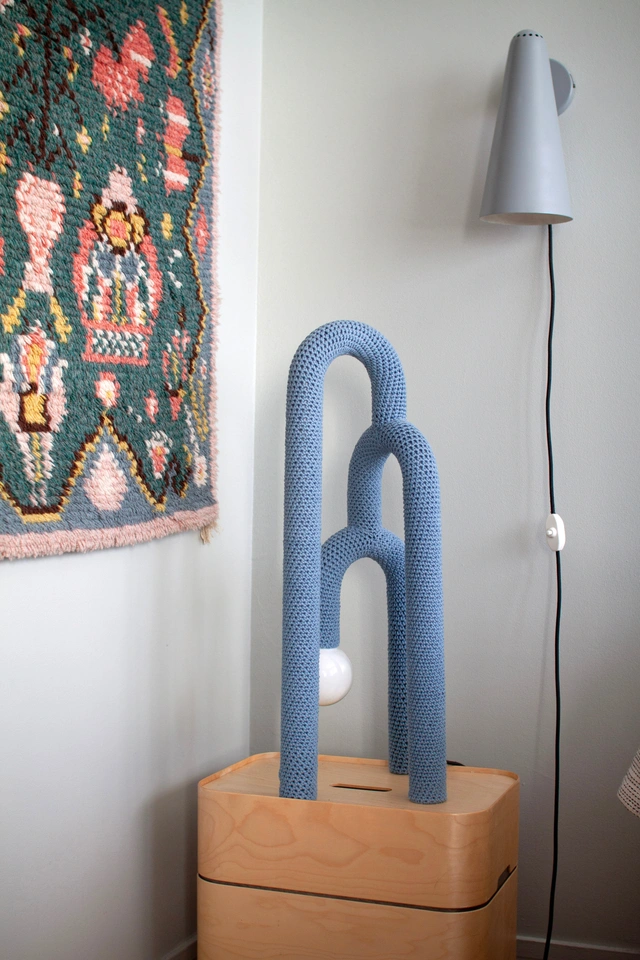

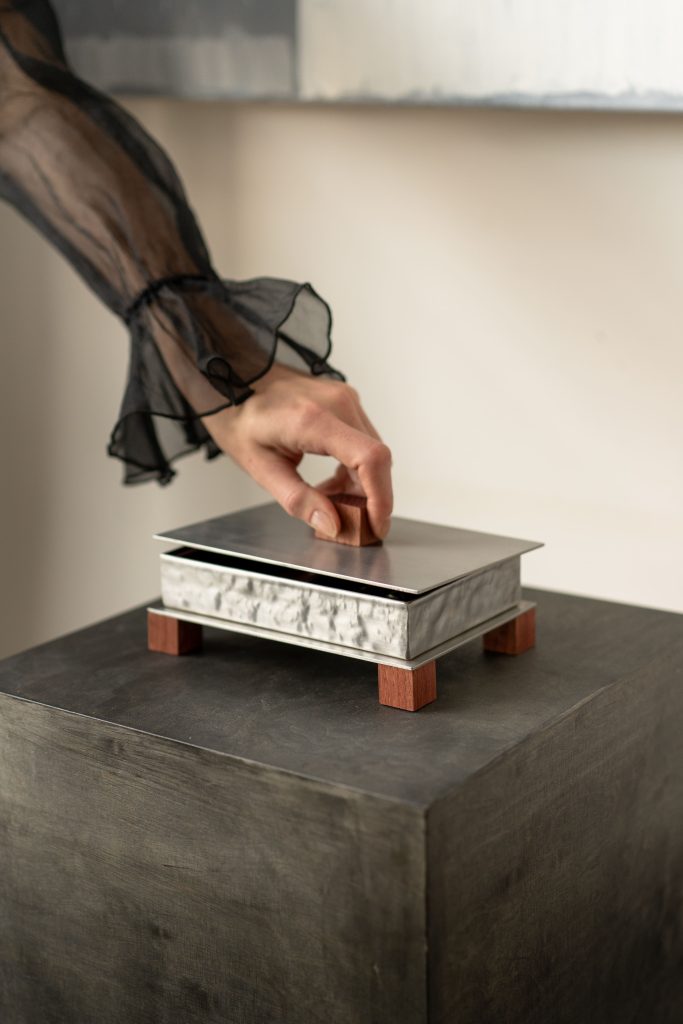

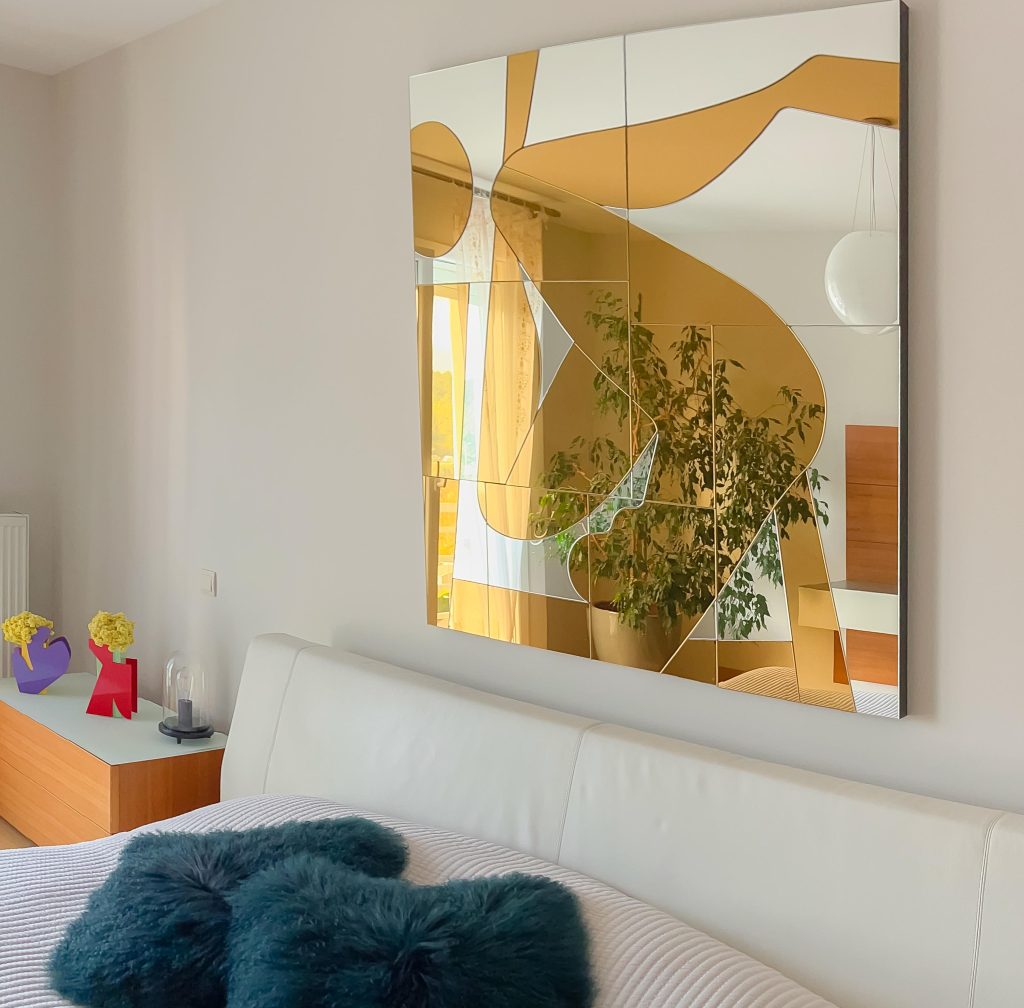

7. Create a Comfortable Seating Area When Space Allows
When dimensions allow, a dedicated sitting area transforms bedroom functionality from purely restorative to genuinely retreative—creating space for morning contemplation or evening unwinding.
- Architectural delineation: Position seating to create a visually distinct zone—a chair angled toward a view or a bench positioned to create conversational geometry
- Functional support: Complete the arrangement with surfaces that enable lingering—side tables at elbow height accommodate books, beverages, or contemplative objects
- Atmospheric consistency: This area should maintain the room’s overall design language while offering different physical engagement—upholstery that complements but doesn’t match bedding creates cohesion without redundancy
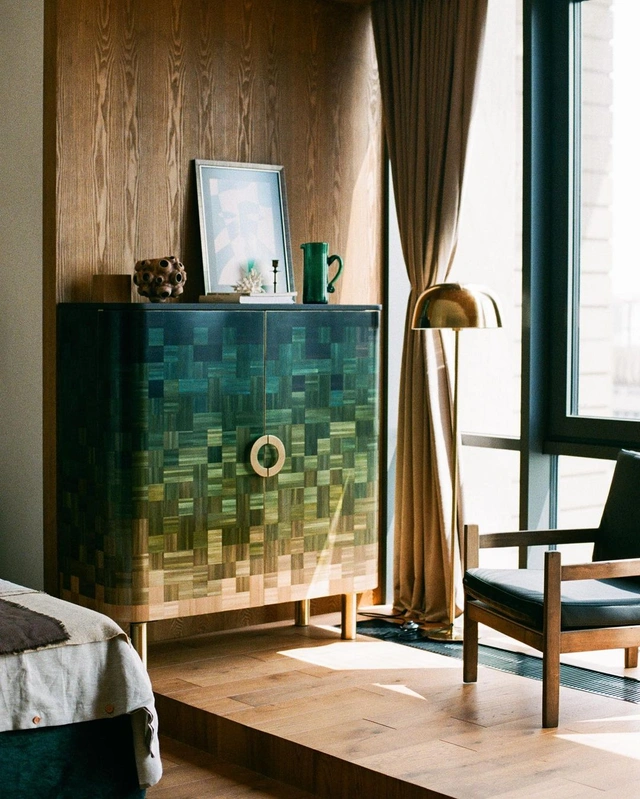

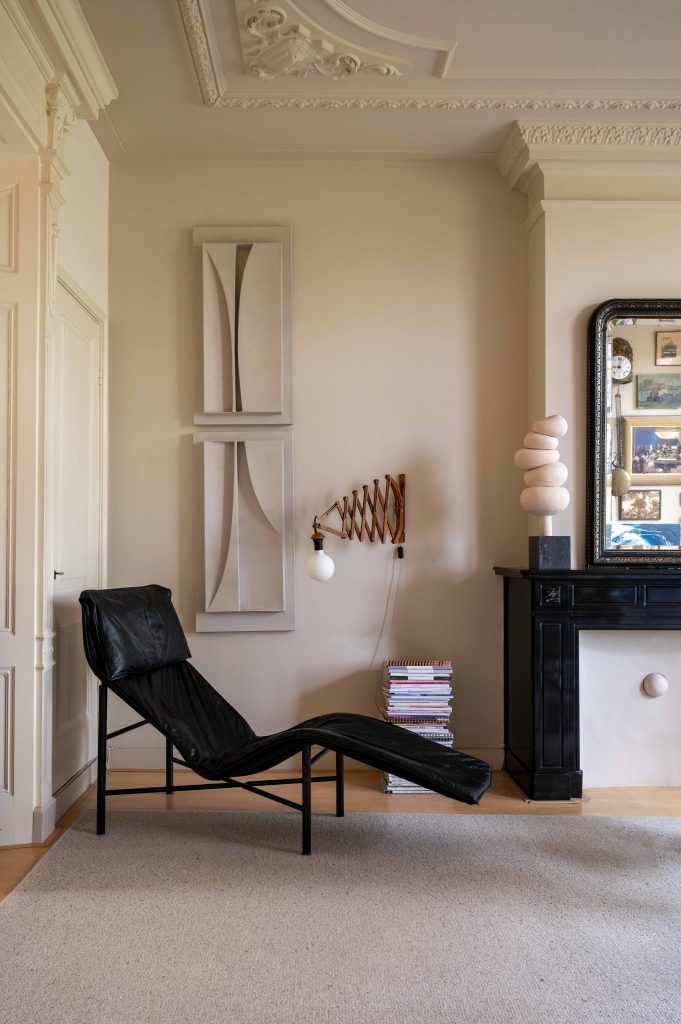

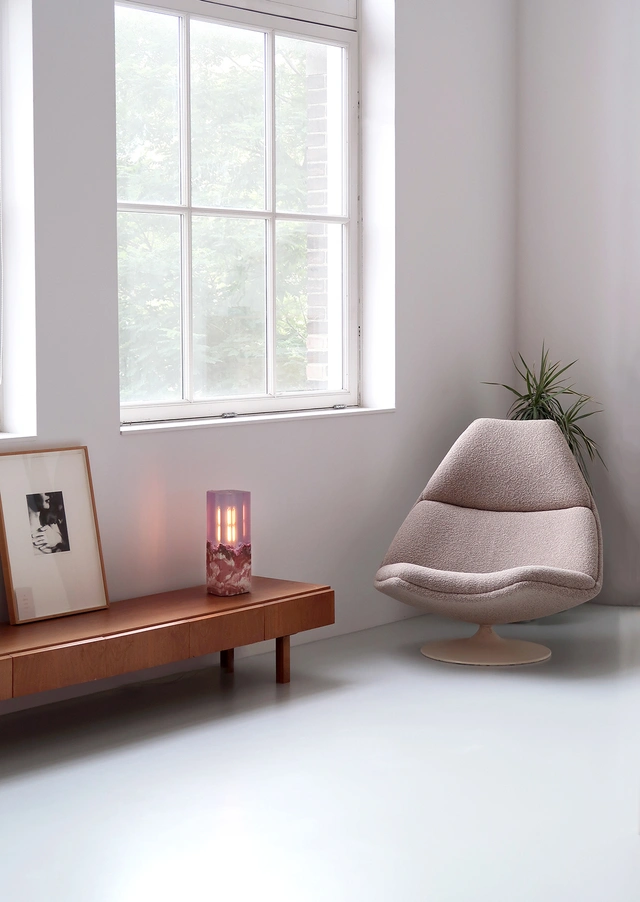

8. Use Mirrors to Enhance Light and Space
Mirrors function as both practical tools and spatial expanders—their reflective properties bring light to dark corners while their frames provide opportunities for material richness.
- Placement psychology: Position mirrors to reflect elements worth duplicating—natural light, architectural details, or thoughtfully styled vignettes
- Form consideration: The mirror’s shape should respond to surrounding geometry—curved forms soften angular rooms, while clean-lined frames bring structure to softer spaces
- Material opportunity: Mirror frames offer concentrated design moments—substantial wood adds warmth, while metal introduces precision and reflective quality
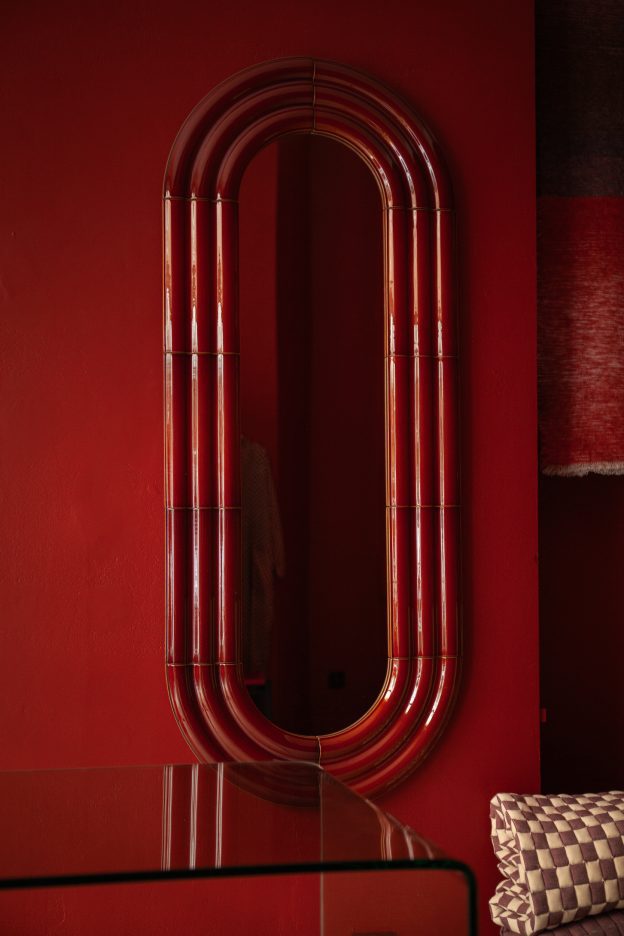

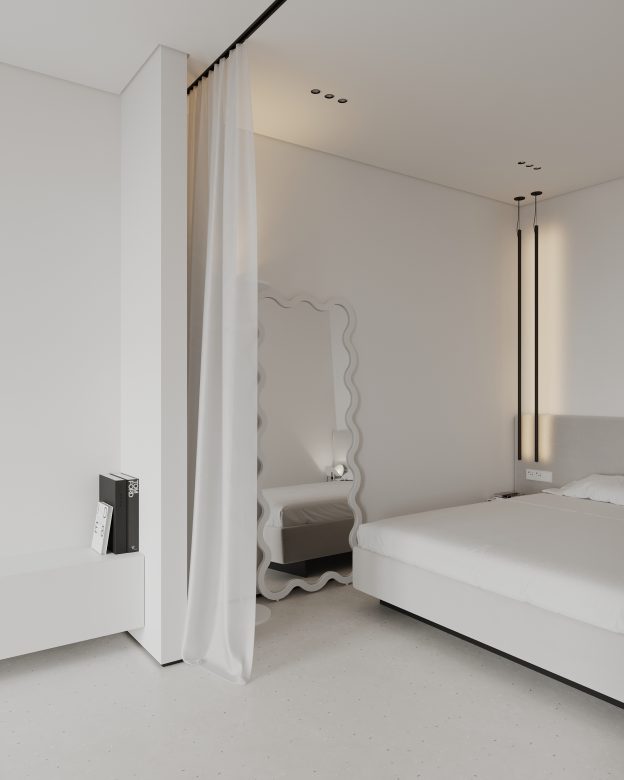

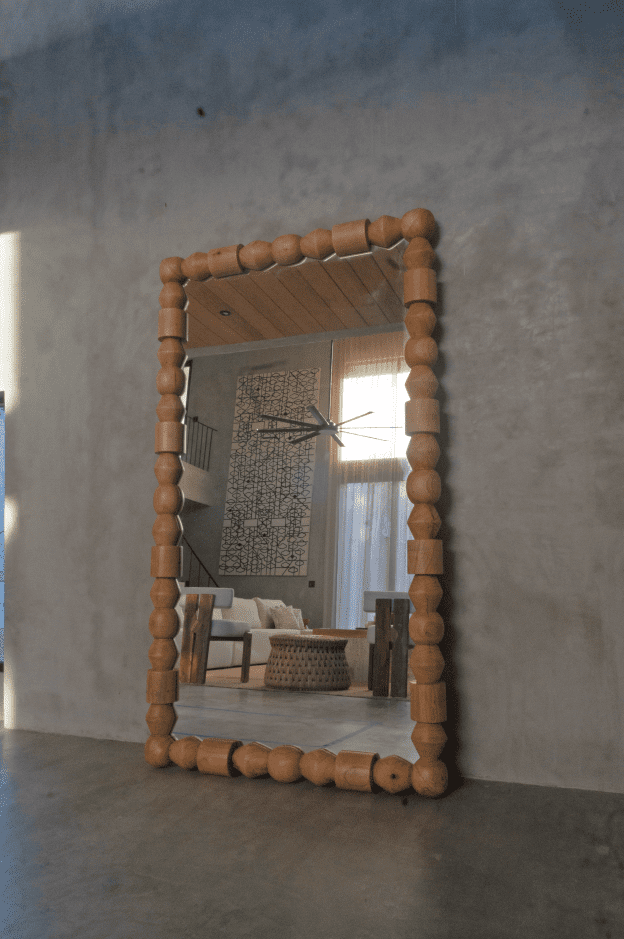

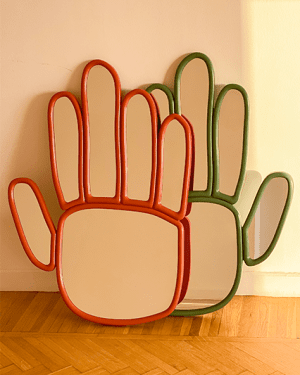

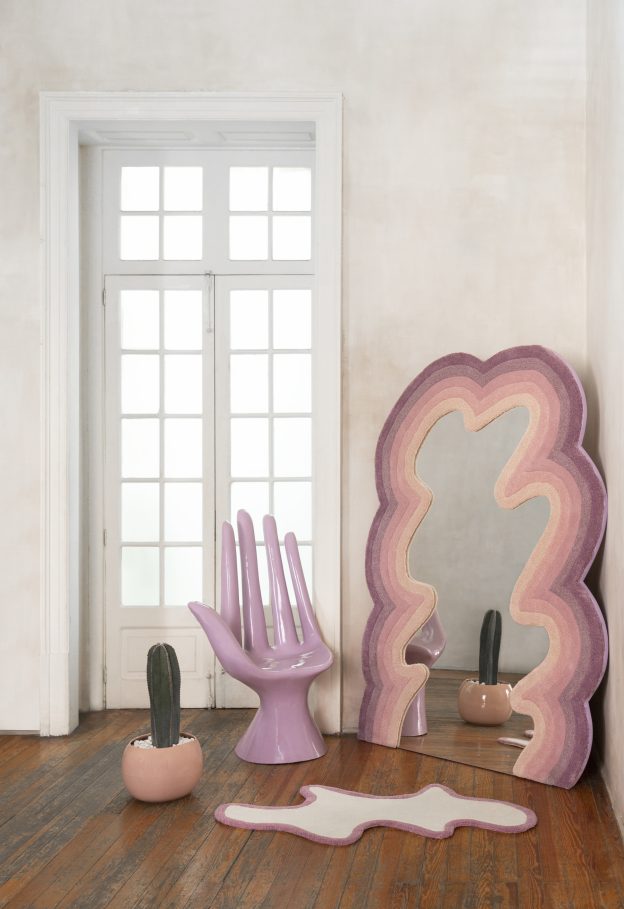

Bringing It All Together: Creating a Cohesive Bedroom Design
A well-designed bedroom balances aesthetics with functionality to support your daily routines. Focus on how you actually use the space rather than following staged photos in magazines. Each element should serve a clear purpose while contributing to the overall design.
The most successful bedrooms reflect personal preferences and habits. Quality furniture, thoughtful lighting, carefully selected textiles, and meaningful decorative elements work together to create a space that feels both intentional and comfortable. This careful balance comes from applying sound design principles while considering your specific needs and tastes.
-

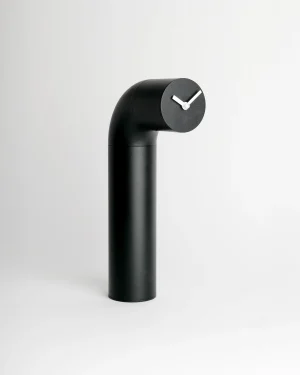 Stadia Clock Black – Stainless Steel Table Clock
Stadia Clock Black – Stainless Steel Table Clock -

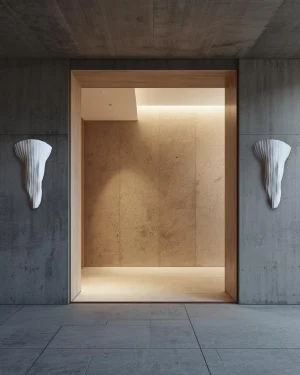 Large Tenderness – Ceramic Wall Sconce
Large Tenderness – Ceramic Wall Sconce -

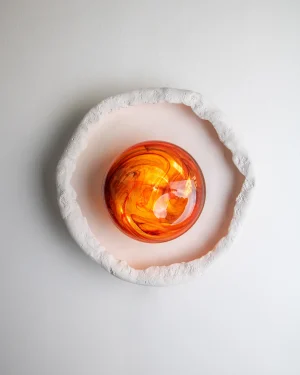 Asea No.35 – Stoneware Ceramic / Blown Glass Sconce
Asea No.35 – Stoneware Ceramic / Blown Glass Sconce -

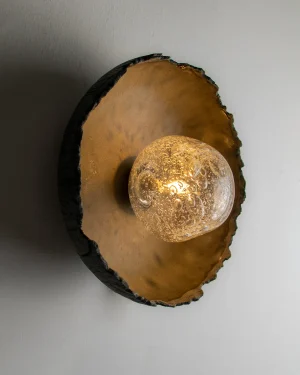 Asea No.12 Moss – Stoneware Porcelain / Blown Glass Sconce
Asea No.12 Moss – Stoneware Porcelain / Blown Glass Sconce -

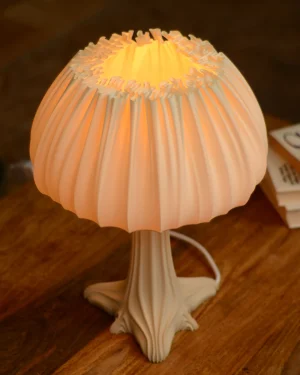 M 2 – Bio Polymer And Natural Sand Table Lamp
M 2 – Bio Polymer And Natural Sand Table Lamp -

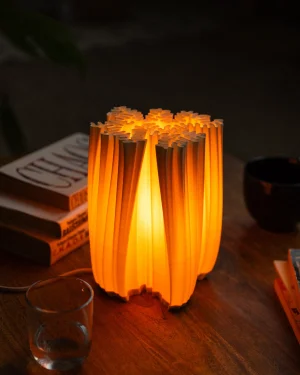 S 2 – Bio Polymer Table Lamp
S 2 – Bio Polymer Table Lamp -

 Reflexion Mirror
Reflexion Mirror -

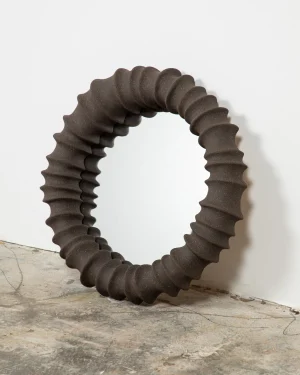 Rakis – Sculptural Neo-industrial Ceramic Wall Mirror
Rakis – Sculptural Neo-industrial Ceramic Wall Mirror -

 Asea No. 23 – Stoneware / Hand-blown Glass Sconce
Asea No. 23 – Stoneware / Hand-blown Glass Sconce -

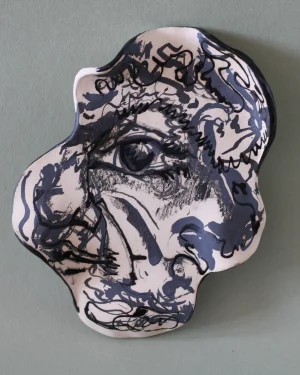 Marbled Dream #2 – Handcrafted Ceramic Illustrated Plate
Marbled Dream #2 – Handcrafted Ceramic Illustrated Plate -

 Marbled Dream #1 – Handcrafted Ceramic Plate
Marbled Dream #1 – Handcrafted Ceramic Plate -

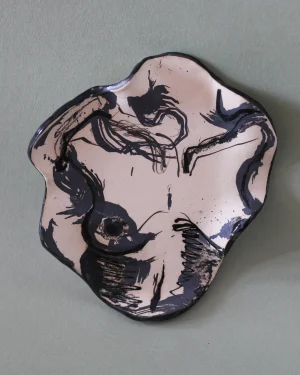 Marbled Dream #3 – Handcrafted Ceramic Plate
Marbled Dream #3 – Handcrafted Ceramic Plate -

 Nikko – Small Stool / Small Side Table
Nikko – Small Stool / Small Side Table -

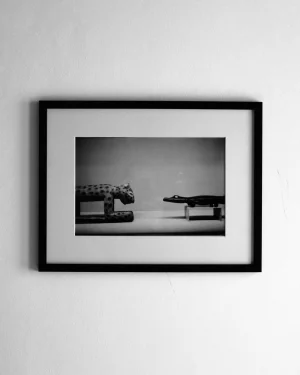 Memory Series #7 – Photography
Memory Series #7 – Photography -

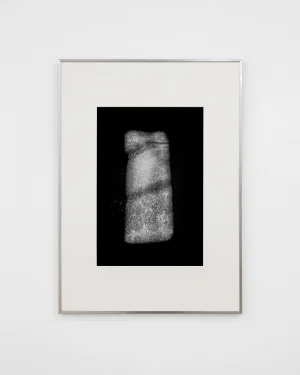 Memory Series #12 – Photography
Memory Series #12 – Photography -

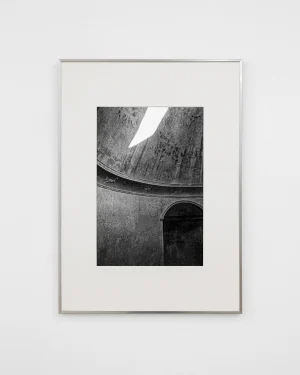 Memory Series #13 – Photography
Memory Series #13 – Photography
